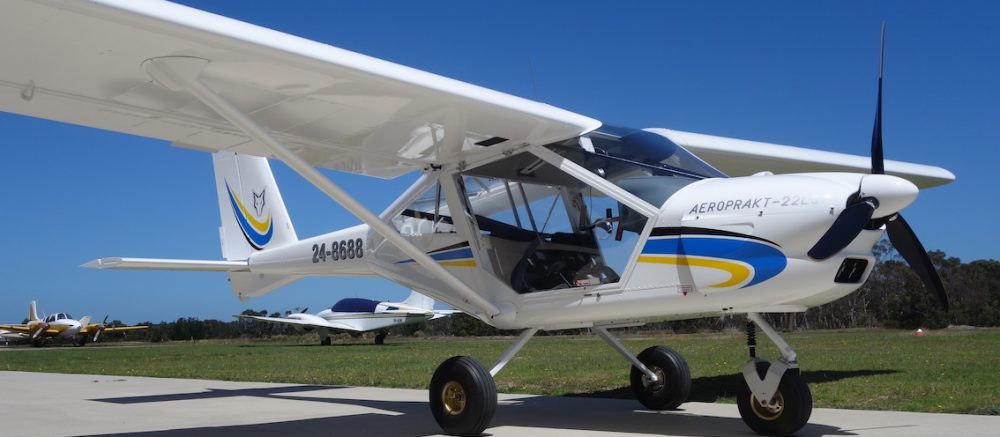 Yesterday there was a fairly strong and gusty crosswind on Tyabb’s 35/17 runway. The crosswind was made even more tricky as the wind was blowing from the north west over the hills and trees near the airfield, making for very uneven and turbulent conditions.
Yesterday there was a fairly strong and gusty crosswind on Tyabb’s 35/17 runway. The crosswind was made even more tricky as the wind was blowing from the north west over the hills and trees near the airfield, making for very uneven and turbulent conditions.
Quite by chance, Mike Rudd, our video producer, was there trying out a new video camera, capturing a couple of aircraft landing – but due to the conditions, there weren’t many up and about in the skies! However, my colleague Ido Segev was flying an A32 Vixxen demonstration with a prospective owner. (Thanks to Stuart for the loan of his aircraft).
This very short video (click the photo or here to view on YouTube) first shows a landing by a Beech Travelair twin, piloted as it turns out, by Roger Merridew, a very experienced pilot and owner of Lilydale Airfield. He is followed closely by Ido and his passenger (who was sitting in the left seat) in the A32 Vixxen.
It’s interesting to note the different techniques used to land each aircraft in what was a 12-15 knot gusting crosswind. In many ways, as you can see, the A32 Vixxen handles the conditions better than the Travelair. The secret to making a successful crosswind landing in the A32 Vixxen is speed management and the minimal use of flap. The aircraft was down safely and exited at the first cross-taxiway, about 70-75 metres from the threshold of runway 35.
Good demonstration Ido!
PS – the prospective customer placed an order after the flight!

Yesterday I was also practising crosswind landings at Bairnsdale in my Foxbat in 15 knot crosswinds, with experienced instructor Martin Higgins in the co-pilot seat. Can’t say my landing was as “smooth” as Ido’s but I successfully completed the manoeuvre in conditions which are pushing the limits for a novice pilot. The Foxbat’s capabilities were able to compensate for the pilot’s inadequacies! I’ll definitely leave the 22 knot crosswind limit for a Foxbat to Ido!
Thanks for sharing this Peter. Can you or Ido advise what approx speed he had on short final ? Always the dilemma – enough for some gust protection but not so much you drift and float while being tossed around. Fairly narrow runway at Tyabb too so good job !
Hi Andrew,
The landing approach in the video was actually less the ideal, as I was a bit high and fast, at around 55knots I slide slipped it first to get back to normal profile(see in the video)
then I kept about 45 knots to short final before reducing power, as 45knots is still pretty fast I have floated quite a distance, but it made for safe landings.
In any conditions with less variation of wind and gusts, 50knots on base, 45knots long final, 40 short final – this is still 13knots above the stall at MTOW! which make for ample safety margins.
Hope this helps
Thaks Ido – the wind speed variation would have been a much larger percentage of your 45 kts than of whatever the Beech twin was doing at the equivalent point (65 kts ??) so well done again ! Gotta love those full span ailerons eh ? It looked to me like no flaps (or rather flaperons), which would make sense. The “40 kts on short final” for more benign conditions must be will full flap I guess because I think 27 kts is the MTOW stall with full flaps..or am I remembering that incorrectly ? What’s the stall speed at MTOW with no flaps ?. All of this is just my curiousity really – other than a quick glance none of us is looking at the ASI at that point I reckon !
Cheers,
AM
Hi Andrew!
You are correct, the landing was made with one stage of flap (which do not lower the stall speed – at least on the book figures) however provide with extra drag.
As for flying without flap, 40knots on short final will work nicely for short field work – but I do agree 45 knots will be a safer choice if no flap is used.
I find that pilots new to the A32 struggle to slow down without the use of flap so naturally, their approach speeds are higher than needed / safe and they float for great distances before touching down.
As you said, best is to use the Yoke/Stick position as a direct indication of the speed and AOA of the airplane rather than instruments – just like the Wright Brothers wanted us all to do! 🙂